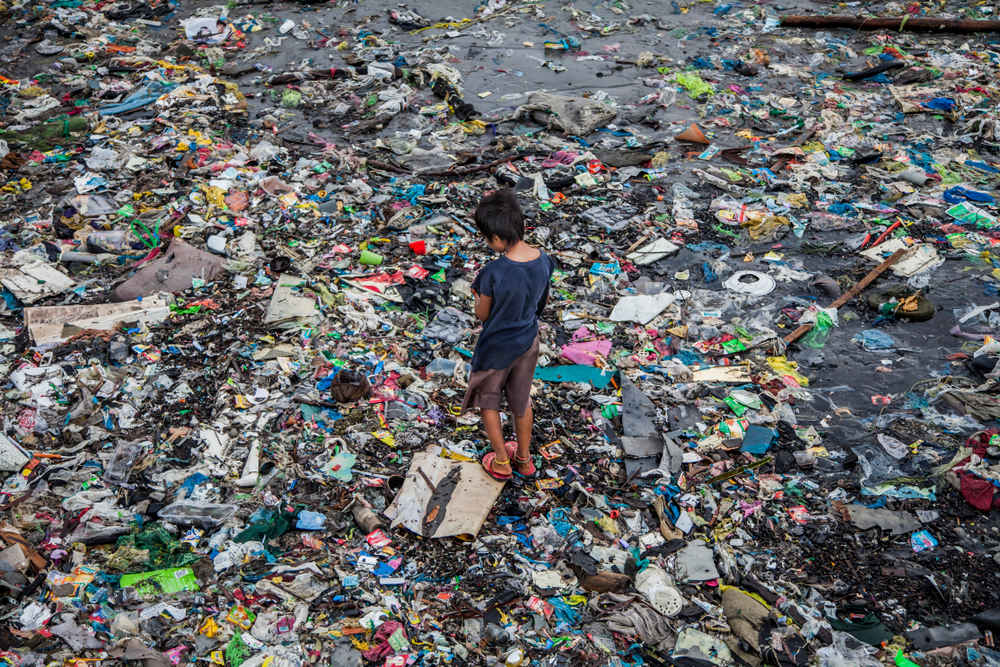Beating plastic pollution, individually and socially
By Ryan Johnson
An ongoing expedition through Padma river, set to end in the Himalayas, aims to study and reduce contamination of oceans by single-use plastic
The world is drowning in plastic pollution, warned a recent UN report. One million plastic drinking bottles are purchased every minute, while up to five trillion single-use plastic bags are used worldwide every year, according to the UN Environment. In total, half of all plastic produced is designed to be used only once, and thrown away.
As part of the global effort to battle plastic pollution, an all-woman team this month opened an expedition through Padma river in Bangladesh, which will end at the source of the Ganges in the Himalayas.
Single-use plastic waste is a global menace. Oceans get clogged with an estimated nine million tonnes of plastic every year, and rivers play a significant role in making the problem worse as they act as conveyor belts for plastic debris flowing into the oceans. Ten rivers carry more than 90% of the plastic waste. The Meghna, the Brahmaputra and the Ganges carry 72,845 tonnes of plastic waste a year.
The “Sea to Source: Ganges” expedition is the first of several international river expeditions planned as part of the National Geographic’s initiative, which aims to significantly reduce the amount of single-use plastic reaching oceans.
“Our experience has been really incredible. We have a very dynamic, interdisciplinary science team working together. We are travelling by boat and we have been welcomed by the communities. We are collecting samples along the river — from water and sediment, and also from the air because we know from other studies that small plastic particles float in the air,” Heather Koldewey, a National Geographic fellow who co-leads the expedition, said in a telephone interview during her journey to southern Bangladesh. She was accompanied by team members Jenna Jambeck and Gawsia Chowdhury.
The team working on the land will collect data on the use of plastic in communities and how waste is collected and managed, and will quantify the movement and type of plastic in the environment. The water team will study plastic pollution in the air, water, sediment and species in and around the river. The socioeconomic team will survey local communities along the expedition route to better understand perceptions of plastic pollution, household plastic waste management and local solutions.
The expedition is designed to mobilise a global community of experts to help tackle the problem, Valerie Craig, vice-president of operating programmes at the National Geographic Society, said in a statement before the team started its work in Bangladesh. “This expedition elevates women in science, technology, engineering and math around the world to help us understand how plastic moves through our waterways and ultimately to find ways to prevent plastic waste from entering the ocean.”
Exponential rise in production
Researchers estimate that more than 8.3 billion tonnes of plastic has been produced since the early 1950s. About 60% of that plastic has ended up either in a landfill or the natural environment. Some other worrying trends have emerged. Since the 1950s, the rate of plastic production has grown faster than that of any other material. There has also been a major shift away from durable plastic towards plastics that are meant to be thrown away after a single use.
These products have become integral to our daily lives. Food and beverage companies are globally derided as bad actors. Coca-Cola, for the first time, has revealed that it used three million tonnes of plastic packaging in one year. This was part of a report by the Ellen MacArthur Foundation, which is pushing for companies and governments to do more to tackle plastic pollution. In total, 150 companies are pledging to reduce their plastic usage as part of the campaign.
“I think the companies have started to realise the impact of plastic, particularly of single-use plastic, on the environment,” Ms. Koldewey said. “We love to see some companies pay attention to reducing the impact of plastic. And in some cases, they are redesigning the way they provide their products.” The UN has urged people to beat plastic pollution in their everyday lives and has asked global leaders to act fast. Whether these alterations in business and people’s lifestyles will lead to an overall change remains to be seen.

